3 Ways to Transform Your Trauma Like a Superhero
Triumph over any tragedy with these essential biohacks from Doctor Strange
6 minute read
by Oily Alchemy on July 4, 2021
Featured artist: @snitevivid
3 Ways to Transform Your Trauma Like a Superhero
Triumph over any tragedy with these essential biohacks from Doctor Strange
6 minute read
by Superpower Dojo on June 1, 2022
Featured artist: @snitevivid
Everyone wants to be a hero.
But here’s the catch—no one wants to become a hero.
Why?
Because power always comes from pain. The greater the trauma, the greater the transformation.
Every superhero experiences a sharp crisis, a make-it-or-break-it moment that writers call an “inciting incident.” Without it, there’s no movement. No journey. No conflict. No story. There’s no drama without trauma.
And that’s why we go to the movies (or we once did, at least), to gawk at the train wrecks of other people’s lives, to see how other people will react to catastrophic circumstances. Nobody wants to spend two hours watching perfect people enjoying perfect lives in a perfect world.
That’s why superheroes are essential. Each of them suffered a personal tragedy or loss and came out on the other side. Take these three examples:

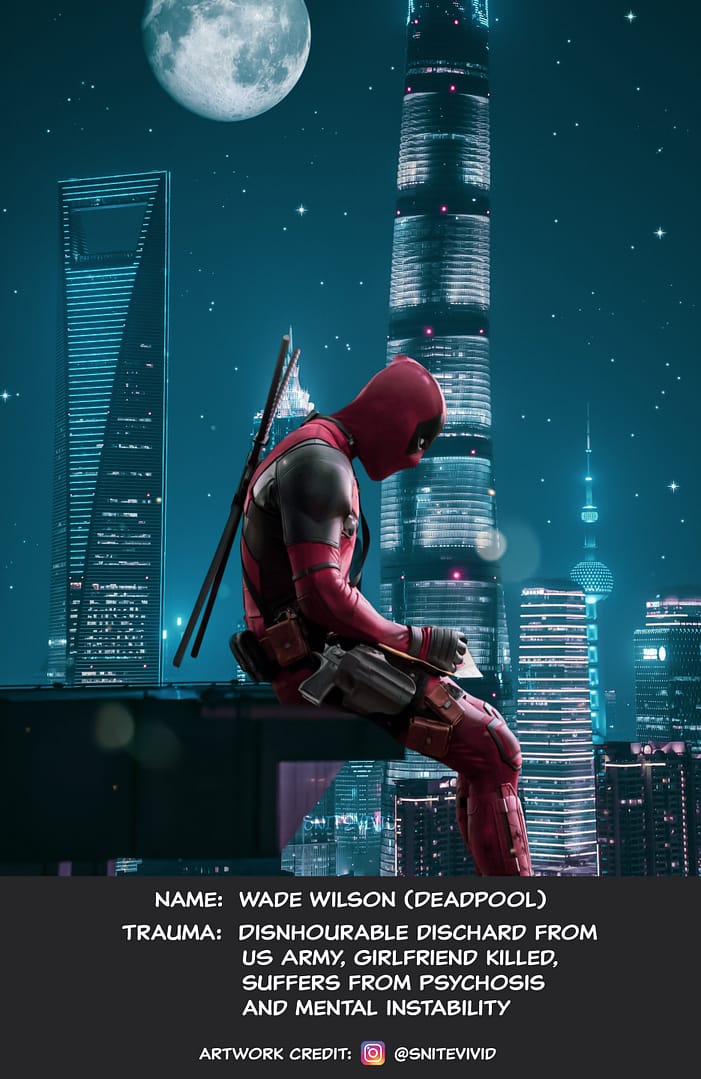
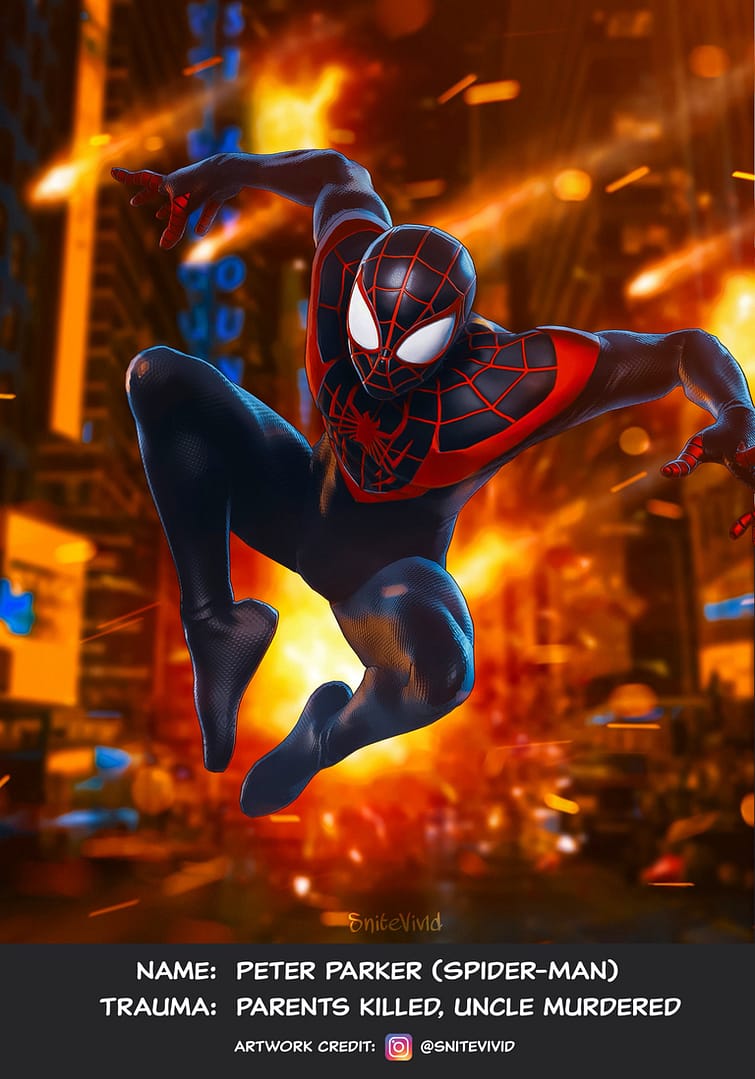
Everyone wants to be a hero.
But here’s the catch—no one wants to become a hero.
Why?
Because power always comes from pain. The greater the trauma, the greater the transformation.
Every superhero experiences a sharp crisis, a make-it-or-break-it moment that writers call an “inciting incident.” Without it, there’s no movement. No journey. No conflict. No story. There’s no drama without trauma.
And that’s why we go to the movies (or we once did, at least), to gawk at the train wrecks of other people’s lives, to see how other people will react to catastrophic circumstances. Nobody wants to spend two hours watching perfect people enjoying perfect lives in a perfect world.
That’s why superheroes are essential. Each of them suffered a personal tragedy or loss and came out on the other side. Take these three examples:



Then there’s Stephen Strange—Doctor Steven Strange, as he’d insist.
Created in 1963 by Steve Ditko and Stan Lee, the good doctor reached epic popularity a few years ago when Marvel Studios released the 2016 blockbuster film Doctor Strange, which grossed $677 million worldwide and merited a highly-anticipated sequel, Doctor Strange and the Multiverse of Madness (slated for release on March 25, 2022).
In the film, Benedict Cumberbatch delivers a spell-binding performance of the egotistical neurosurgeon who hits rock bottom (quite literally), embarks on a quest, masters the mystical arts, and then saves the world by sacrificing himself—not once, but as many times as it takes.
This story captures the most dynamic transformation ever attempted in the genre: from doctor to patient, from arrogance to emptiness, from materialistic to mystic.
Watching the transformation of Doctor Strange is, well, transformative.
Shortly after the opening fight scene, the screen becomes something of a window, allowing us—from a safe distance, of course—to watch the nightmare unfold around a man whose life suddenly implodes.
But at the same time, this movie has a mirror-like quality, allowing us to see our own reflections in its screen, in its story—a reminder that cinema is a two-way street. The camera captures the Hollywood stars, but it also captures us. For what is Doctor Strange but the amalgamation of the journey that each of us undertakes when we are confronted with the hard questions of life:
- Would I be okay if I lost my job, my status and income, my reputation?
- How long could I survive alone, without the person I love most?
- If everything good in my life was gone, would life still be worth living?
Questions like these make us human. But finding the right answers, and applying them … well, that’s what can make us superhuman.
But before we begin opening portals to other dimensions, searching for magic capes, or protecting the world from psychedelic cosmic invaders, let’s start with the basics of becoming a superhero.
Then there’s Stephen Strange—Doctor Steven Strange, as he’d insist.
Created in 1963 by Steve Ditko and Stan Lee, the good doctor reached epic popularity a few years ago when Marvel Studios released the 2016 blockbuster film Doctor Strange, which grossed $677 million worldwide and merited a highly-anticipated sequel, Doctor Strange and the Multiverse of Madness (slated for release on March 25, 2022).
In the film, Benedict Cumberbatch delivers a spell-binding performance of the egotistical neurosurgeon who hits rock bottom (quite literally), embarks on a quest, masters the mystical arts, and then saves the world by sacrificing himself—not once, but as many times as it takes.
This story captures the most dynamic transformation ever attempted in the genre: from doctor to patient, from arrogance to emptiness, from materialistic to mystic.
Watching the transformation of Doctor Strange is, well, transformative.
Shortly after the opening fight scene, the screen becomes something of a window, allowing us—from a safe distance, of course—to watch the nightmare unfold around a man whose life suddenly implodes.
But at the same time, this movie has a mirror-like quality, allowing us to see our own reflections in its screen, in its story—a reminder that cinema is a two-way street. The camera captures the Hollywood stars, but it also captures us. For what is Doctor Strange but the amalgamation of the journey that each of us undertakes when we are confronted with the hard questions of life:
- Would I be okay if I lost my job, my status and income, my reputation?
- How long could I survive alone, without the person I love most?
- If everything good in my life was gone, would life still be worth living?
Questions like these make us human. But finding the right answers, and applying them … well, that’s what can make us superhuman.
But before we begin opening portals to other dimensions, searching for magic capes, or protecting the world from psychedelic cosmic invaders, let’s start with the basics of becoming a superhero.
1. Own your past before it owns you.
Every superhero has a history, a past, a skeleton (or in some cases, a vast cemetery) in the closet.
Here’s some backstory about Doctor Strange you might not know.
Born during the Great Depression in 1930, Stephen Vincent Strange lived on a Nebraska farm with Donna, his sister. One day, after treating one of her injuries, he decides to become a doctor.
But on Stephen’s nineteenth birthday, tragedy strikes when Donna drowns in a swimming accident. Unable to revive her, Stephen carries her memory with him to medical school as a personal reminder of his failure and as a motivation never to allow anyone else to die on his watch again.
It worked.
Doctor Strange reached the pinnacle of success as a world-renowned neurosurgeon, and he had the cocky swagger to match it. High-ceilinged penthouse perch. Drawers of luxury watches. A bullet-sleek, asphalt-hungry Lamborghini Huracán Coupé.
Then the unthinkable happens. The inciting incident.
Stephen awakes in a hospital bed after a brutal car accident to discover that his hands are mangled—a surgeon’s worst-case scenario.
Suddenly, his meteoric career is over.
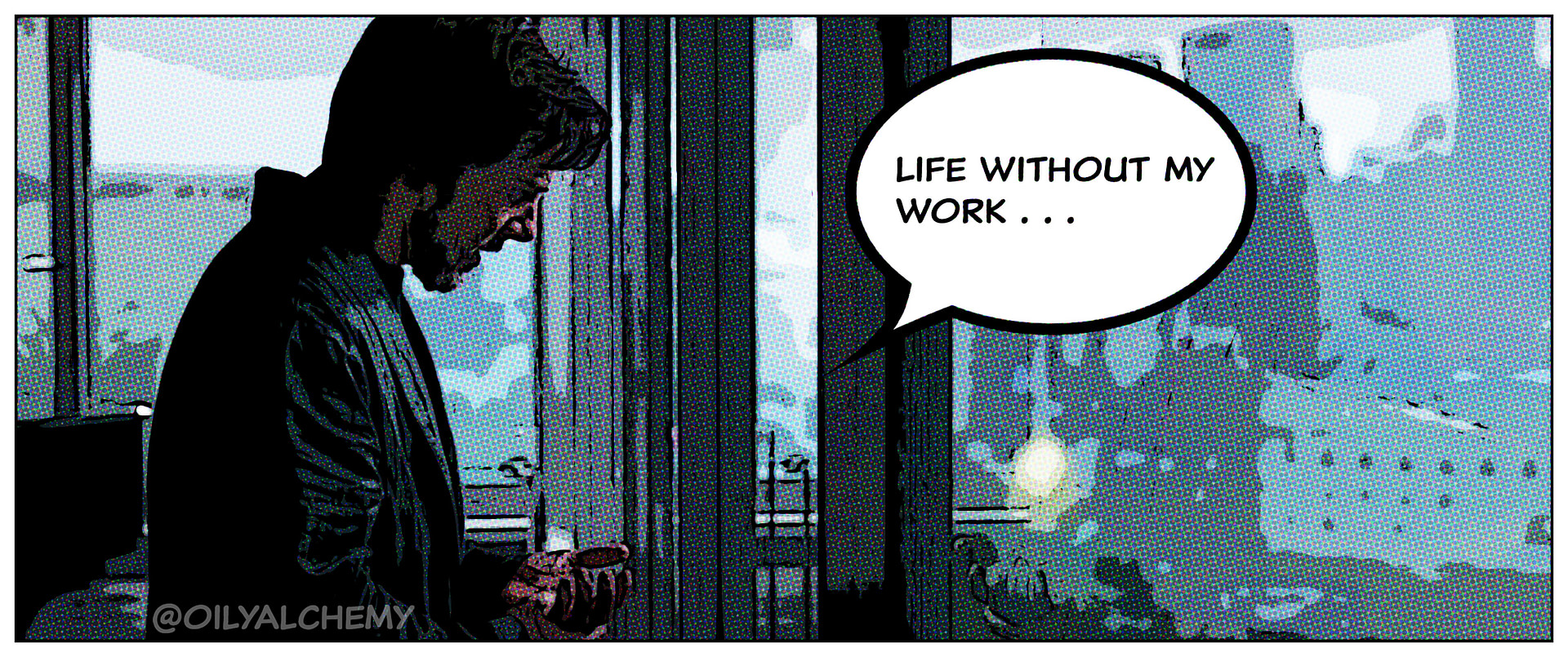
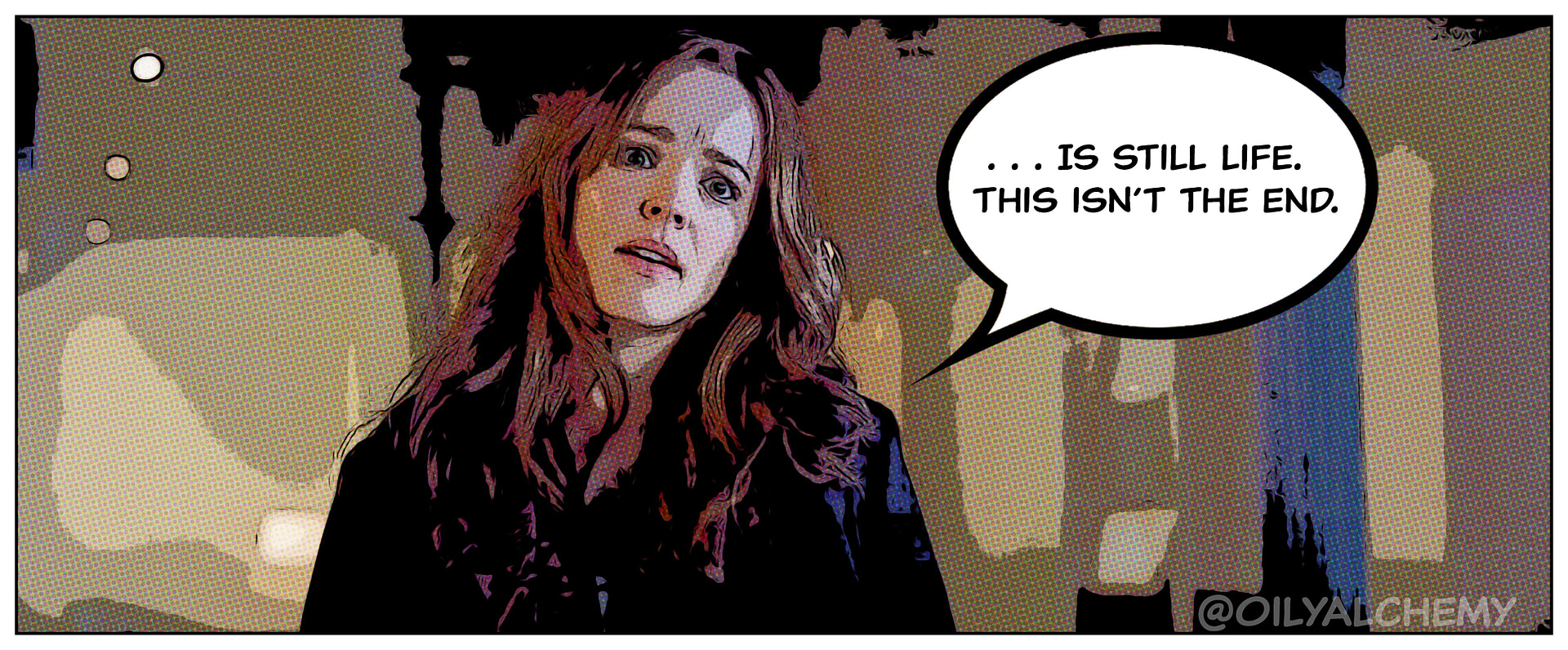
Before the car accident, Doctor Strange enjoyed living life in the fast lane. But now, a crisis forces him to make a decision:
Choice 1: Give up completely and lose the second woman in his life, his girlfriend Christine (played in the film by Rachel McAdams)
Choice 2: Downshift, own the past, embrace the pain, and release the identity he spent his whole life constructing
Which would you choose?
2. Your deepest wound is your greatest weapon, so stop aiming it at yourself.
Like most people in his situation, Stephen plummets headfirst into an emotional death spiral, oscillating between rage and hopelessness, questing for a cure while sinking into despair.
And then the plot twists.
Stephen thought his life was over, but in reality his journey was just beginning. His setback was actually a setup for something better—a pilgrimage to Tibet to meet the so-called “Ancient One” (played in the film by Tilda Swinton) where, over a cup of tea, she taught him more about the art of healing than he had learned in all his years of med school.
Doctor Strange would later realize that his car accident wasn’t the problem—it was the solution. Losing his job didn’t limit him, it liberated him.
Horrific things will happen to you and me. And it’s okay to feel devastated by them.
But there is a way to push through the pain, to be transformed by the suffering, to become a superhero. The key is to embrace trauma as a necessary chapter in your story, as belonging to the epic narrative of your life.
Why?
Because no one gets to benefit from your pain as much as you do. The process of overcoming trauma gives you strength you never would have had—superpowers untapped by people enjoying “perfect” lives.
Your deepest wound is your greatest weapon. So stop aiming it at yourself.

If you’re fortunate enough to be a survivor, it means that at some point in your life you were strong enough to muscle your way through an impossible experience.
The word itself, survive, comes from the fusion of two Latin words: super (“in addition to”) and vivere (“living”).
By definition, to be a survivor is to be super alive.
It means that you’ve discovered something else, something “in addition to,” that makes life worth living. Somehow, in your moment of greatest darkness, you caught a glimpse of something—or someone—worth living for, worth fighting for.
So don’t waste your trauma. It’s your secret weapon.
Your setback is setting you up to be who you were born to be.
3. It’s okay to be a loser.
Stephen’s life wasn’t over when his career came to a crashing halt.
Yes, he lost his job, his health, his security and status. For a while, he lost his community, his reputation, his sense of belonging and identity.
But when Doctor Strange became skilled at becoming a loser, he was finally able to lose a few things he never should have carried in the first place: his vanity, greed, arrogance and selfishness.
Being a loser isn’t easy, but there’s an enormous perk. The more you lose, the more time you gain to see what’s really worth keeping.
Stephen’s choice to keep going, to push through the pain, equipped him to defeat Dormammu, his enemy, and save the world.
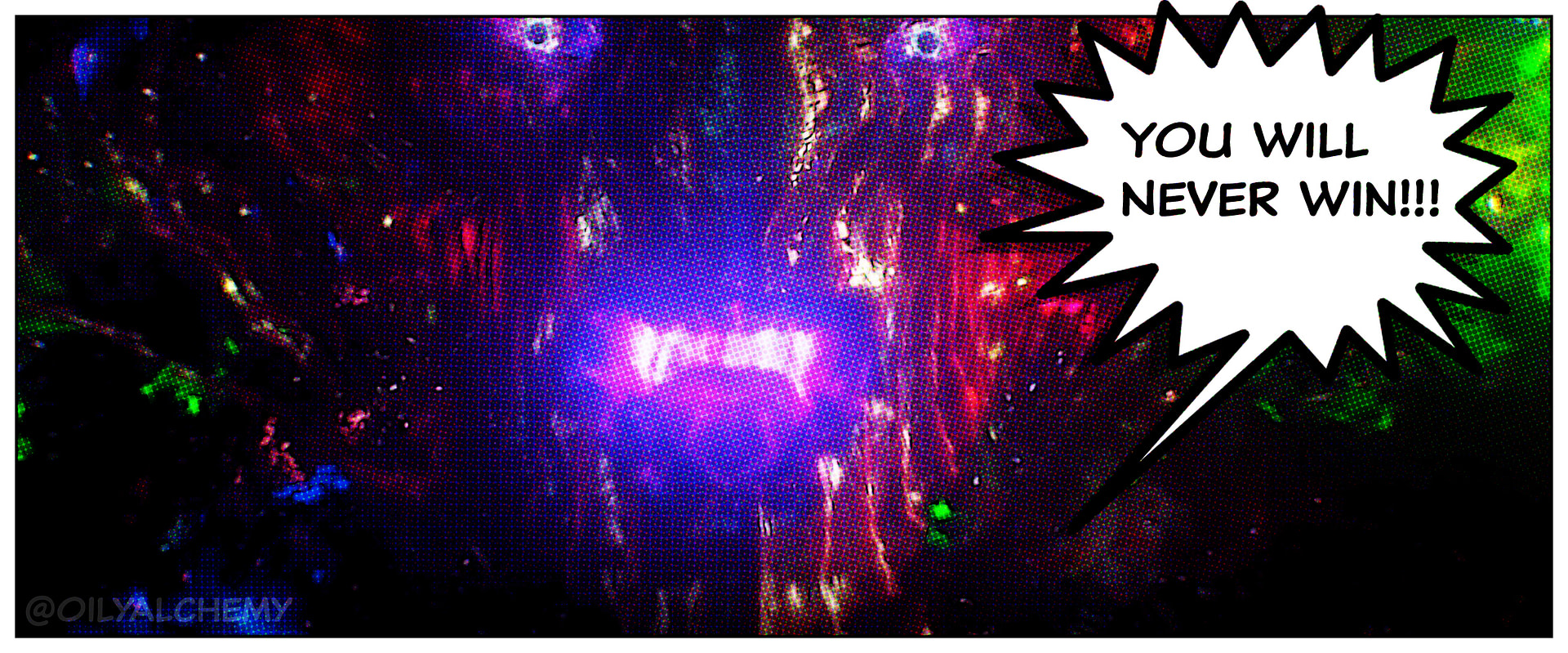
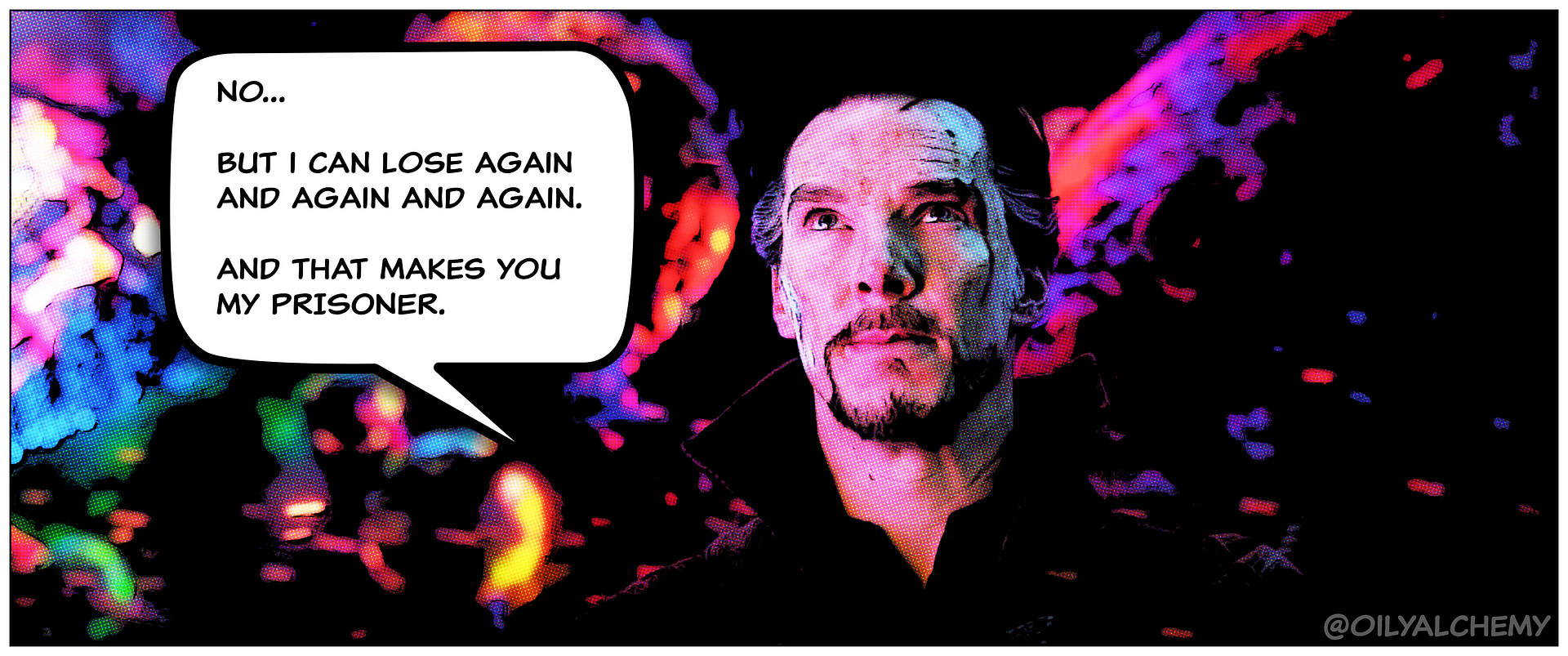
Doctor Strange lost a lot. But there’s one thing he kept—the tremble in his hands.
A superhero’s greatest power is the ability to carry the past into the future, to accept the things that cannot be changed, and to pivot pain in the direction of a purpose greater than themselves. To be a superhero is to live with unresolved conflict, to be okay with wounds that do not heal. With time, skin can scar over, but it doesn’t take much to remind even the greatest of super-survivors where they came from.
Trauma will always be the best teacher because it produces the best students.
Empty yourself. For only the empty things can enjoy the luxury of being filled.
@OilyAlchemy
Your inciting incident differs from mine, but within each of us is a smashed clock, its hands fixed to the moment of our greatest pain. It’s okay to be broken because broken things have edges, and edges shimmer, and it is only through the kaleidoscope of your greatest struggle that the world will see your light and life.
So, chin up.
You can live with that debilitating disease, with that broken heart, with that heavy burden. It is possible to begin again, to start over, to dream bigger, to triumph over your tragedy.
Ordinary people become superheroes every day.
All it takes is a choice, a singular decision: to live each day as the victor instead of the victim.

In the end, Stephen’s broken fingers didn’t need to be cured; they were the cure.
And inward they curled, pointing to the deeper things, the hidden ailments, that only trauma can heal.
3. It’s okay to be a loser.
Stephen’s life wasn’t over when his career came to a crashing halt.
Yes, he lost his job, his health, his security and status. For a while, he lost his community, his reputation, his sense of belonging and identity.
But when Doctor Strange became skilled at becoming a loser, he was finally able to lose a few things he never should have carried in the first place: his vanity, greed, arrogance and selfishness.
Being a loser isn’t easy, but there’s an enormous perk. The more you lose, the more time you gain to see what’s really worth keeping.
Stephen’s choice to keep going, to push through the pain, equipped him to defeat Dormammu, his enemy, and save the world.


Doctor Strange lost a lot. But there’s one thing he kept—the tremble in his hands.
A superhero’s greatest power is the ability to carry the past into the future, to accept the things that cannot be changed, and to pivot pain in the direction of a purpose greater than themselves. To be a superhero is to live with unresolved conflict, to be okay with wounds that do not heal. With time, skin can scar over, but it doesn’t take much to remind even the greatest of super-survivors where they came from.
Trauma will always be the best teacher because it produces the best students.
Empty yourself. For only the empty things can enjoy the luxury of being filled.
@OilyAlchemy
Your inciting incident differs from mine, but within each of us is a smashed clock, its hands fixed to the moment of our greatest pain. It’s okay to be broken because broken things have edges, and edges shimmer, and it is only through the kaleidoscope of your greatest struggle that the world will see your light and life.
So, chin up.
You can live with that debilitating disease, with that broken heart, with that heavy burden. It is possible to begin again, to start over, to dream bigger, to triumph over your tragedy.
Ordinary people become superheroes every day.
All it takes is a choice, a singular decision: to live each day as the victor instead of the victim.

In the end, Stephen had lost a lot. But his broken fingers didn’t need to be cured; they were the cure.
And inward they curled, pointing to the deeper things, the hidden ailments, that only trauma can heal.
1. Own your past before it owns you.
Every superhero has a history, a past, a skeleton (or in some cases, a vast cemetery) in the closet.
Here’s some backstory about Doctor Strange you might not know.
Born during the Great Depression in 1930, Stephen Vincent Strange lived on a Nebraska farm with Donna, his sister. One day, after treating one of her injuries, he decides to become a doctor.
But on Stephen’s nineteenth birthday, tragedy strikes when Donna drowns in a swimming accident. Unable to revive her, Stephen carries her memory with him to medical school as a personal reminder of his failure and as a motivation never to allow anyone else to die on his watch again.
It worked.
Doctor Strange reached the pinnacle of success as a world-renowned neurosurgeon, and he had the cocky swagger to match it. High-ceilinged penthouse perch. Drawers of luxury watches. A bullet-sleek, asphalt-hungry Lamborghini Huracán Coupé.
Then the unthinkable happens. The inciting incident.
Stephen awakes in a hospital bed after a brutal car accident to discover that his hands are mangled—a surgeon’s worst-case scenario.
Suddenly, his meteoric career is over.
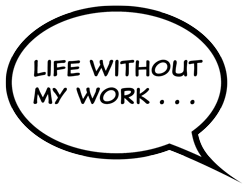
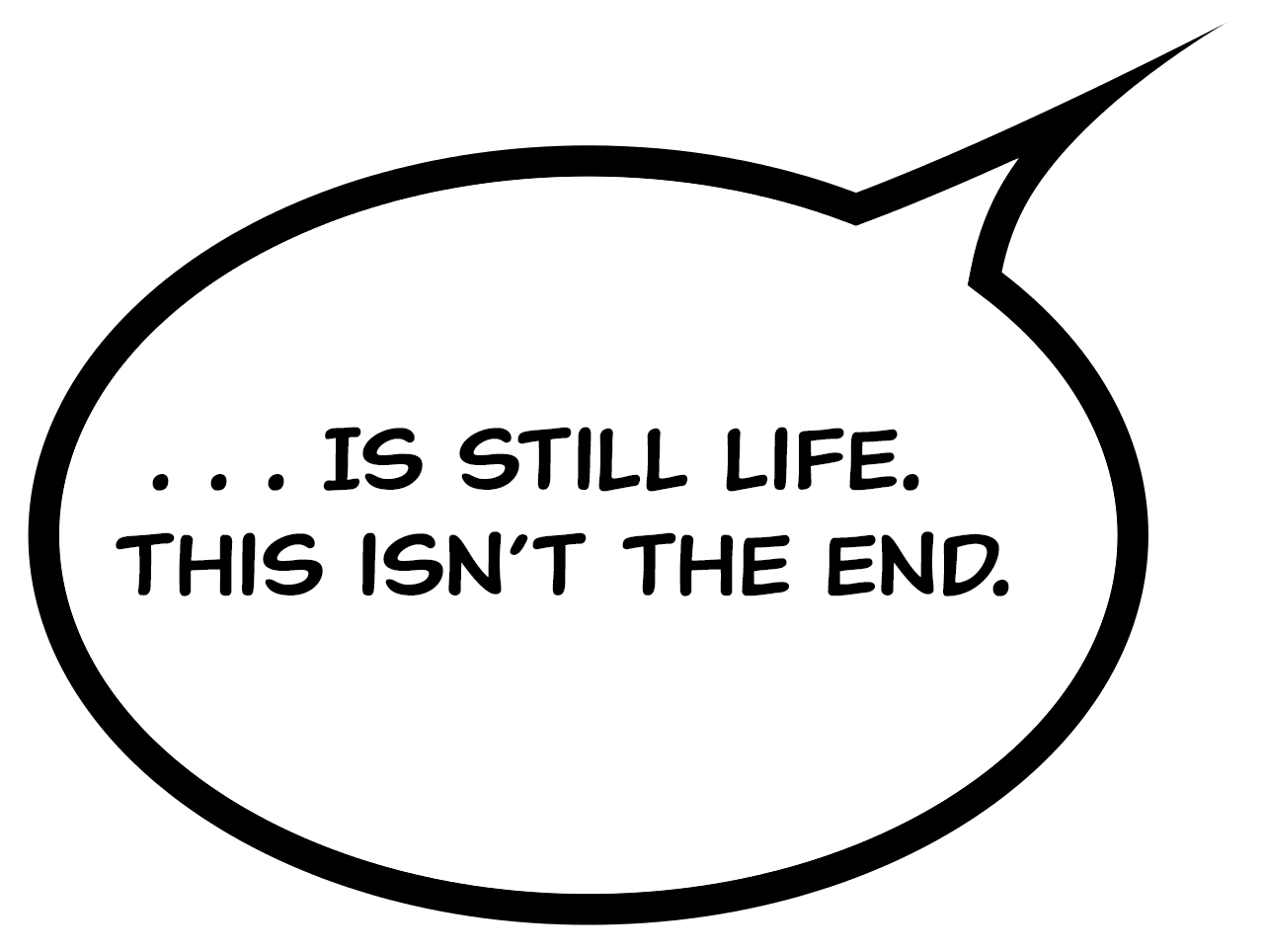
Before the car accident, Doctor Strange enjoyed living life in the fast lane. But now, a crisis forces him to make a decision:
Choice 1: Give up completely and lose the second woman in his life, his girlfriend Christine (played in the film by Rachel McAdams)
Choice 2: Downshift, own the past, embrace the pain, and release the identity he spent his whole life constructing
Which would you choose?
2. Your deepest wound is your greatest weapon, so stop aiming it at yourself.
Like most people in his situation, Stephen plummets headfirst into an emotional death spiral, oscillating between rage and hopelessness, questing for a cure while sinking into despair.
And then the plot twists.
Stephen thought his life was over, but in reality his journey was just beginning. His setback was actually a setup for something better—a pilgrimage to Tibet to meet the so-called “Ancient One” (played in the film by Tilda Swinton) where, over a cup of tea, she taught him more about the art of healing than he had learned in all his years of med school.
Doctor Strange would later realize that his car accident wasn’t the problem—it was the solution. Losing his job didn’t limit him, it liberated him.
Horrific things will happen to you and me. And it’s okay to feel devastated by them.
But there is a way to push through the pain, to be transformed by the suffering, to become a superhero. The key is to embrace trauma as a necessary chapter in your story, as belonging to the epic narrative of your life.
Why?
Because no one gets to benefit from your pain as much as you do. The process of overcoming trauma gives you strength you never would have had—superpowers untapped by people enjoying “perfect” lives.
Your deepest wound is your greatest weapon. So stop aiming it at yourself.
If you’re fortunate enough to be a survivor, it means that at some point in your life you were strong enough to muscle your way through an impossible experience.
The word itself, survive, comes from the fusion of two Latin words: super (“in addition to”) and vivere (“living”).
By definition, to be a survivor is to be super alive.
It means that you’ve discovered something else, something “in addition to,” that makes life worth living. Somehow, in your moment of greatest darkness, you caught a glimpse of something—or someone—worth living for, worth fighting for.
So don’t waste your trauma. It’s your secret weapon.
Your setback is setting you up to be who you were born to be.
3. It’s okay to be a loser.
Stephen’s life wasn’t over when his career came to a crashing halt.
Yes, he lost his job, his health, his security and status. For a while, he lost his community, his reputation, his sense of belonging and identity.
But when Doctor Strange became skilled at becoming a loser, he was finally able to lose a few things he never should have carried in the first place: his vanity, greed, arrogance and selfishness.
Being a loser isn’t easy, but there’s an enormous perk. The more you lose, the more time you gain to see what’s really worth keeping.
Stephen’s choice to keep going, to push through the pain, equipped him to defeat Dormammu, his enemy, and save the world.

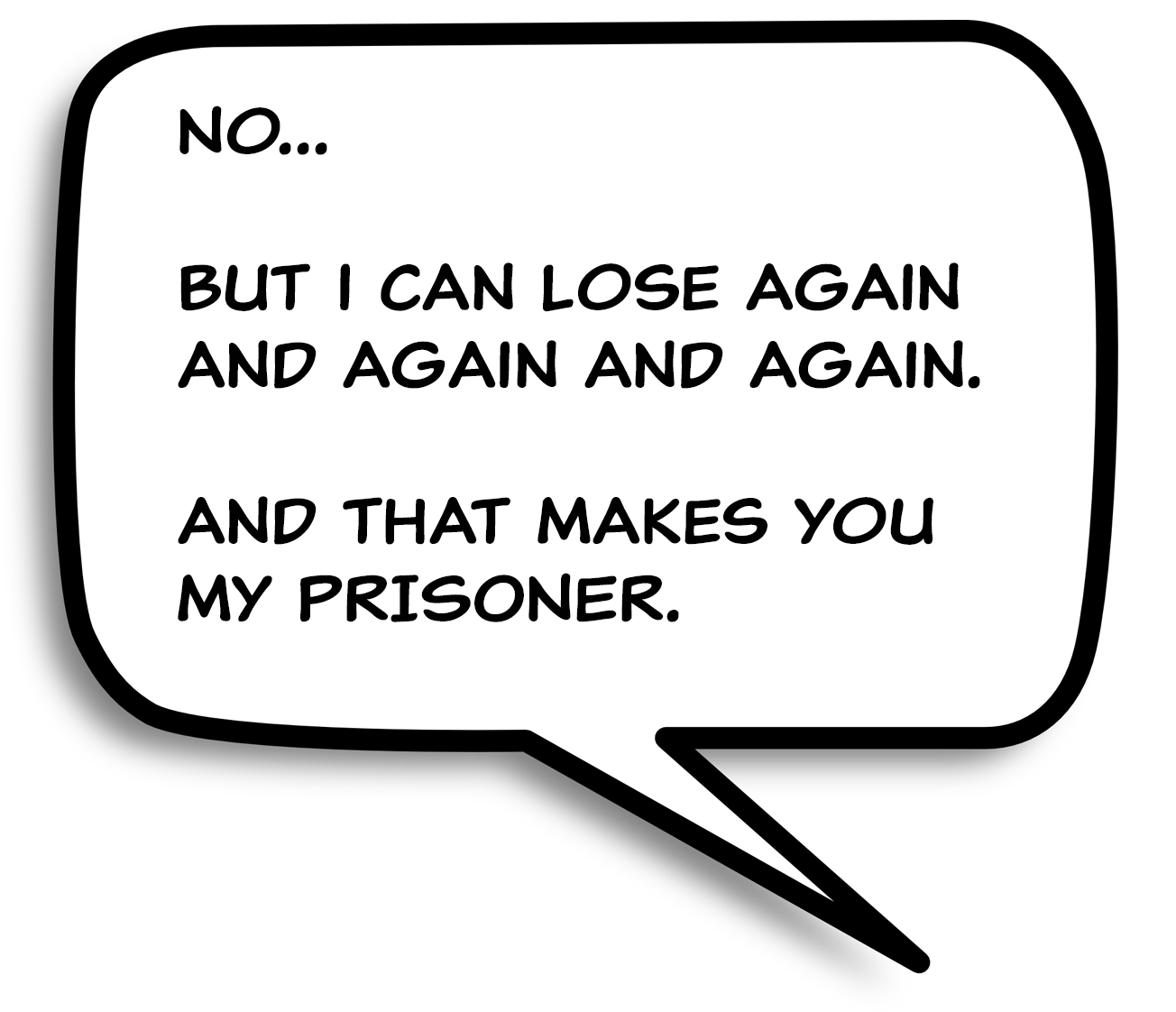
Doctor Strange lost a lot. But there’s one thing he kept—the tremble in his hands.
A superhero’s greatest power is the ability to carry the past into the future, to accept the things that cannot be changed, and to pivot pain in the direction of a purpose greater than themselves. To be a superhero is to live with unresolved conflict, to be okay with wounds that do not heal. With time, skin can scar over, but it doesn’t take much to remind even the greatest of super-survivors where they came from.
Trauma will always be the best teacher because it produces the best students.
Empty yourself. For only the empty things can enjoy the luxury of being filled.
@OilyAlchemy
Your inciting incident differs from mine, but within each of us is a smashed clock, its hands fixed to the moment of our greatest pain. It’s okay to be broken because broken things have edges, and edges shimmer, and it is only through the kaleidoscope of your greatest struggle that the world will see your light and life.
So, chin up.
You can live with that debilitating disease, with that broken heart, with that heavy burden. It is possible to begin again, to start over, to dream bigger, to triumph over your tragedy.
Ordinary people become superheroes every day.
All it takes is a choice, a singular decision: to live each day as the victor instead of the victim.
Get My Free Guide
How to Prep for Quarantine 2.0

[contact-form-7 id=”12338″ /]